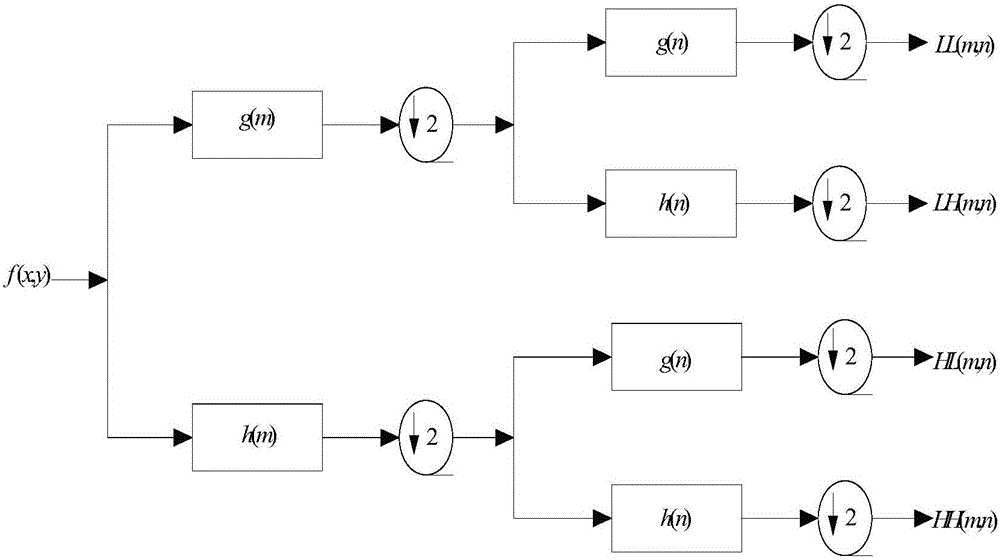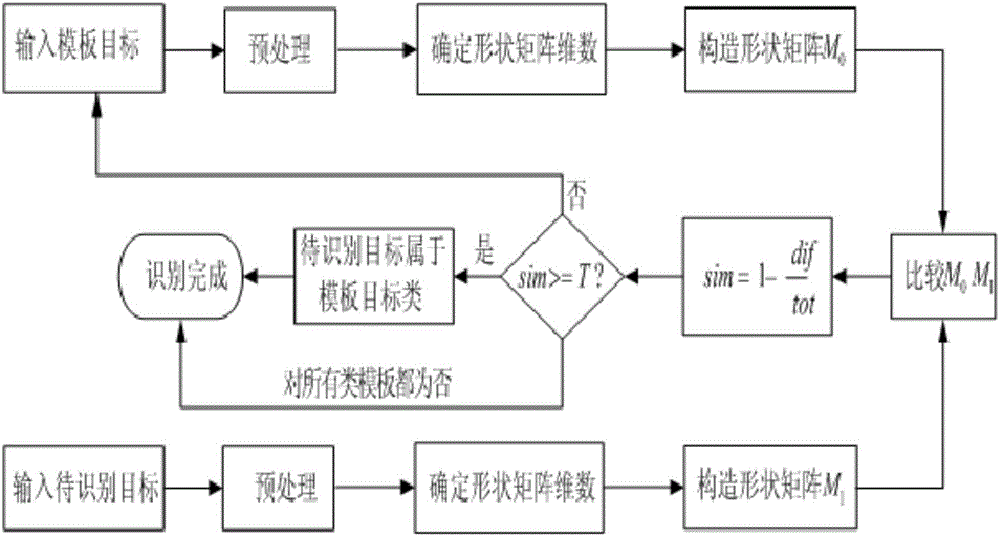Typical ship target identification method based on graded invariance features
A target recognition and ship technology, applied in the field of aerospace remote sensing, can solve the problems of small number of pixels, low recognition ability, limited ability of target shape representation, etc., and achieve the effect of easy extraction, improved description ability, and simple calculation
- Summary
- Abstract
- Description
- Claims
- Application Information
AI Technical Summary
Problems solved by technology
Method used
Image
Examples
Embodiment Construction
[0041] The specific implementation of the present invention will be described below in conjunction with the accompanying drawings and specific implementation examples:
[0042] The images of the satellite ship image library of the present invention all come from the remote sensing satellite image library. The images are all in JPEG format with a gray scale of 256.
[0043] figure 1 For the flow chart of the present invention, from figure 1 It can be seen that a typical ship target recognition method based on hierarchical invariance features provided by the present invention is characterized in that the steps are as follows:
[0044] (1) Perform adaptive filtering, maximum inter-class variance segmentation and normalization for skew correction for each input satellite remote sensing image.
[0045] (2) For each satellite remote sensing image, the global feature extraction of the ship target is performed, and the comprehensive feature vector is composed of binary entropy and ...
PUM
 Login to View More
Login to View More Abstract
Description
Claims
Application Information
 Login to View More
Login to View More - R&D
- Intellectual Property
- Life Sciences
- Materials
- Tech Scout
- Unparalleled Data Quality
- Higher Quality Content
- 60% Fewer Hallucinations
Browse by: Latest US Patents, China's latest patents, Technical Efficacy Thesaurus, Application Domain, Technology Topic, Popular Technical Reports.
© 2025 PatSnap. All rights reserved.Legal|Privacy policy|Modern Slavery Act Transparency Statement|Sitemap|About US| Contact US: help@patsnap.com



